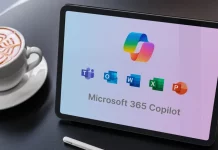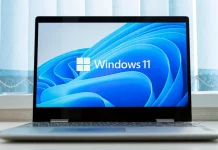If important data is stuck on a computer that won’t start, don’t panic. Although having a backup is always best, there are reliable ways to recover your files in an emergency.
Don’t Panic—Data Recovery Is Often Possible
It’s frustrating when your computer won’t boot, but losing your data is even more stressful. If your computer won’t start and you don’t have a backup, don’t lose hope. While a damaged or dead hard drive may make recovery expensive or impossible, many common issues—like a corrupted bootloader or faulty power supply—can prevent startup while leaving your files intact.
Two Main Ways to Recover Your Data
If your data is still there, you can retrieve it either by booting your computer with a USB drive or by physically removing the hard drive and accessing it with another device. Both methods require an external drive to copy your files onto. You don’t need to be an expert—just follow the steps carefully.
Method 1: Boot From a USB Drive
Sometimes the hardware is fine, but Windows won’t load due to boot errors or driver problems. In this case, you can boot from a Windows USB drive and access your data.
- Use a working PC and a USB drive with at least 16GB of storage.
- Download Microsoft’s Media Creation Tool to create Windows 10 or 11 installation media.
- Run the tool, choose “Create installation media,” then select “ISO file” and save it.
- Download Rufus, a third-party utility, to make the USB drive bootable.
- In Rufus, select your USB drive, load the Windows ISO as the Boot Selection, set Image Option to “Windows To
Go,” and start the process. - Once finished, insert the USB drive into the faulty computer and reboot.
- At startup, press the indicated key to enter the boot menu (commonly F11) and select the USB drive. If needed,
adjust the BIOS boot order to prioritize the USB drive.
This boots a fresh Windows environment from the USB, letting you open File Explorer and hopefully access your main drive’s files. If your drive uses BitLocker encryption, you will need the recovery key to unlock the data.
From here, copy important files to a separate external drive for safekeeping. Afterward, you can troubleshoot or reinstall Windows without risking data loss.
Mac users can create a similar recovery drive to boot macOS from external media.
Method 2: Remove the Hard Drive and Use Another Computer
If your computer won’t start at all, booting from USB won’t work. Instead, you can remove the hard drive and connect it to a working computer.
- You’ll need: a screwdriver, a SATA-to-USB cable or docking station (for traditional drives), or an M.2-to-USB
adapter if your laptop uses an M.2 drive. - Check your laptop’s specifications or search for disassembly guides online to safely open your device.
Opening a desktop PC is generally straightforward—usually just sliding off a side panel. Laptop drives require removing screws and the bottom panel. Note: many modern Macs have storage soldered directly onto the motherboard, making this method impossible—they require professional repair.
After removing the drive, connect it via USB to a computer running the same platform (Windows drives to Windows PCs, macOS drives to Macs). The drive should appear in the file manager, allowing you to copy your important files to an external drive securely.
Prevention: Always Back Up Your Data
This process highlights the importance of regular backups. It’s worth the effort to avoid future panic.
- Clone your data drive for an exact copy.
- Use built-in tools like Windows Backup and Recovery or macOS Time Machine.
- Regularly check your drive’s health.
- Automate backups to external drives or cloud storage.
Setting up a backup system today means peace of mind tomorrow—so you never face the threat of data loss alone.





